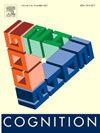视觉搜索中避免分心的无偏测量方法
IF 2.8
1区 心理学
Q1 PSYCHOLOGY, EXPERIMENTAL
引用次数: 0
摘要
最近的研究结果表明,人们有可能在视觉搜索过程中主动避免被突出的分心物吸引注意力。这些结果对于理解视觉注意力中自上而下和自下而上因素的相互影响具有重要意义。尽管如此,人们对明显被忽略的分心物的处理程度仍然存在疑问。为了评估分心物的处理情况,以往的实验采用了一种探测法,即在搜索显示屏上偶尔叠加一些刺激物,要求被试中止搜索并识别探测刺激物。最近的研究表明,这种探究任务可能容易受到决策层面偏差的影响,例如被试愿意报告即将被忽略的项目上的刺激物。我们在此报告一种不受此限制的新方法的结果。在新方法中,非目标搜索元素(包括突出的干扰物)包含与目标一致或不一致的特征。对非目标元素的处理是通过共享特征的兼容性对目标判断的影响来推断的。在使用该技术进行的四次实验中,我们发现被忽略的突出分心元素的处理确实不如不突出的非目标元素那么充分,这与之前使用探针法进行的研究结果相同。此外,我们还发现,至少在早期知觉或注意阶段,对分心元素的处理会部分减少,这与注意抑制模型所假设的一样。这项研究证实了在没有决策水平偏差的情况下测得的主动避免被突出分心物捕获的结果,并提供了一种评估分心物加工程度的新技术。本文章由计算机程序翻译,如有差异,请以英文原文为准。
Bias-free measure of distractor avoidance in visual search
Recent findings suggest that it is possible for people to proactively avoid attentional capture by salient distractors during visual search. The results have important implications for understanding the competing influences of top-down and bottom-up factors in visual attention. Nevertheless, questions remain regarding the extent to which apparently ignored distractors are processed. To assess distractor processing, previous experiments have used a probe method in which stimuli are occasionally superimposed on the search display–requiring participants to abort the search and identify the probe stimuli. It has been recently shown that such probe tasks may be vulnerable to decision-level biases, such as a participant's willingness to report stimuli on to-be-ignored items. We report here results from a new method that is not subject to this limitation. In the new method, the non-target search elements, including the salient distractors, contained features that were either congruent or incongruent with the target. Processing of the non-target elements is inferred from the effects of the compatibility of the shared features on judgments about the target. In four experiments using the technique we show that ignored salient distractors are indeed processed less fully than non-target elements that are not salient, replicating the results of earlier studies using the probe methods. Additionally, the processing of the distractors was found to be reduced at least in part at early perceptual or attentional stages, as assumed by models of attentional suppression. The study confirms the proactive avoidance of capture by salient distractors measured without decision-level biases and provides a new technique for assessing the magnitude of distractor processing.
求助全文
通过发布文献求助,成功后即可免费获取论文全文。
去求助
来源期刊

Cognition
PSYCHOLOGY, EXPERIMENTAL-
CiteScore
6.40
自引率
5.90%
发文量
283
期刊介绍:
Cognition is an international journal that publishes theoretical and experimental papers on the study of the mind. It covers a wide variety of subjects concerning all the different aspects of cognition, ranging from biological and experimental studies to formal analysis. Contributions from the fields of psychology, neuroscience, linguistics, computer science, mathematics, ethology and philosophy are welcome in this journal provided that they have some bearing on the functioning of the mind. In addition, the journal serves as a forum for discussion of social and political aspects of cognitive science.
 求助内容:
求助内容: 应助结果提醒方式:
应助结果提醒方式:


